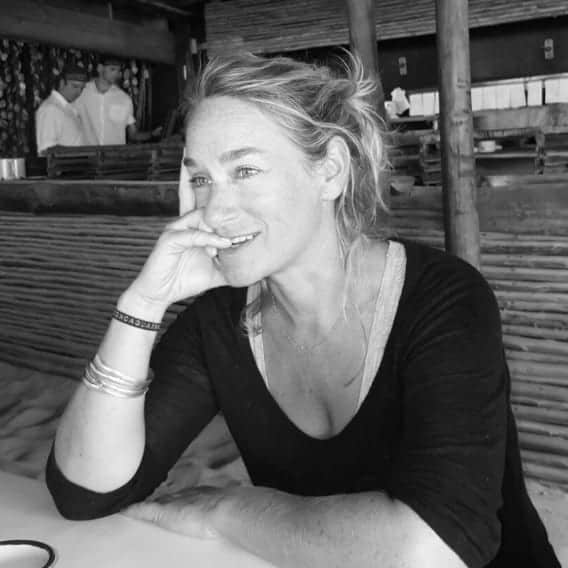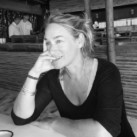
Embark on a journey into the transformative realm of somatic coaching with Caitlin Clarke, a seasoned Certified Hakomi Practitioner and ICF-certified Professional Integrative Coach. In this exclusive interview, Caitlin shares her serendipitous discovery of somatic healing and its profound impact on her life. With a focus on aiding highly sensitive, ambitious women, she sheds light on the delicate balance between sensitivity and success. Dive into the intricacies of her coaching style, where mindfulness and movement converge to create a dynamic approach that guides individuals in coming home to themselves. Uncover the wisdom gained from over two decades of healing experience and a profound connection between Buddhism, trauma awareness, and somatics that form the bedrock of Caitlin’s holistic coaching philosophy. Learn practical advice on establishing a sustainable self-care routine, fostering well-being, and overcoming stress and overwhelm. Join MysticMag as we explore Caitlin’s unique journey and the empowering insights she brings to the world of somatic coaching.
How did you discover your passion for somatic coaching, and what led you to specialize in helping highly sensitive, ambitious women?
I stumbled upon somatic (body-informed) coaching like you might discover a hidden gem in a vintage store—totally unexpectedly but life-changing. After trying every self-help avenue from talk therapy to screaming into the ocean (yes, it helped, but only so much), starting somatic healing felt like a real aha moment. Instead of talking in circles about my problems, I was finally able to get to the root of my unhealthy patterns and change them through somatic embodiment methods, gently and extremely effectively.
Specializing in helping highly sensitive, ambitious women came naturally because I am one! [laughs] After going through years of burnout, I realized my sensitivity is one of my greatest strengths, but only if I treat it with respect and care. So once I changed my perspective and turned my life around, I realized that so many women need support in balancing their sensitive and driven sides. I get really excited about helping my clients redesign their lives to match their needs for both spaciousness and success, instead of continuing to push-push-push no matter the cost to them, their relationships, or their happiness.
As a Certified Hakomi Practitioner and ICF-certified Professional Integrative Coach, how do you integrate mindfulness and movement into your coaching sessions to help individuals come home to themselves?
My style of coaching is about connecting the mind and body, because we live in a world that encourages us to see the body as separate from us somehow, like a beast to be tamed or whipped into shape. It’s far from the truth. I approach coaching from the perspective that our bodies have wisdom of their own—and if we listen, we can use that information to drastically improve our lives. It’s not about one vs. the other, the body vs. the mind, but about bringing them both into relationship and balance.
When I say mindfulness, people often think we’re going to sit there and I’ll guide them into a meditation. What I do is more like applied, dynamic mindfulness—I use mindfulness as a state-of-being tool through which we can do deeper work and transformation. Sometimes a client will spend almost the whole session with her eyes closed, exploring her internal world and reporting out to me as we study and navigate it together. Other times, I’ll weave mindfulness more simply into the session, kicking off with a few deep breaths to help her come back to her body in the moment, and bringing it back in when big emotions come up. I tailor my approach to each client.
Movement in my sessions isn’t about choreography but exploring the body’s intelligence. This intelligence shows up through impulses and physical gestures, so instead of staying still in a chair the whole time, I might encourage you to follow your impulse to stretch your arms out, or stand up and feel into your feet, or try out a posture that represents a state of mind you’re working through. It’s about allowing your body to move authentically, supporting emotional expression, and trusting that the body knows how to move through things and help the mind process whatever’s coming up.
Our unconscious patterns and beliefs speak through the body. The work I do with clients is often to help them learn how to listen with curiosity, compassionate presence, and awareness, so that stuck patterns and energy can begin to move through.
In your work with highly sensitive individuals, how do you address the challenges of stress and overwhelm, helping them identify and overcome the root causes that may be hindering their personal and professional growth?
Most of my clients, when we start to tune into their minds and bodies and what’s happening in the present moment, begin to realize that their stress and overwhelm is often due not to something that’s “wrong” with them, but that they’ve become casualties of the systemic glorification of things like hustle culture and unrealistic cultural expectations around productivity. These expectations are sometimes subtle and sometimes loud, but they’re always in the air. And for ambitious women, we really absorb these expectations because we want to play the game and win it. We want to kick ass in our careers and make a name for ourselves, leave our mark and make a difference in the world.
A lot of the stress and overwhelm that women who work with me experience can come from fear and resistance to living life according to what they actually, deep-down need and want. They spend a lot of time trying to prove that they’re just as tough as people who aren’t highly sensitive. And then they burn out.
The truth is, they are tough—they’re strong and resilient, just not necessarily in the ways we culturally define those things (like big biceps and no sleep). And they have other gifts, like intuition and attunement to subtle changes in the spaces they inhabit, that maybe they haven’t really been valuing as much.
So there’s some unlearning that needs to happen—because being ambitious and high-achieving often comes with a price when it’s not embodied mindfully. And that price doubles when you’re highly sensitive, because you’re essentially telling your body that what it needs to feel good isn’t important. There’s always another mountain to climb, and it’s easy once you get to the top of one to immediately start going up the next. That leads to a lot of stress and anxiety and exhaustion over time.
People’s root causes are all different, but the results are usually the same—disconnect from themselves and the parts of them that maybe need to rest more, or slow down, or be lovingly spoken to instead of criticized.
So that’s where we start: by working with what’s here, right now, in this moment, and slowing the heck down to figure out who exactly is driving their life, what limiting beliefs are they operating from that maybe don’t serve them anymore?
Jimi Hendrix said, “Knowledge speaks, wisdom listens.” I work with brilliant women who are successful in their fields. They’re very smart. But in my experience wisdom doesn’t come from the brain alone—it comes from the body and from lived experience. So we do a lot of listening in my sessions: to the client’s natural pacing, their body language, and all the parts of them that maybe haven’t had a voice or have been ignored until now.
And when we do that, the answers usually begin to come much more easily, without so much efforting. That’s the path we take. And it leads to some incredible places.
Can you elaborate on the role of somatics, Buddhism, and trauma in shaping your holistic approach? How do these elements come together to create a comprehensive framework for your coaching practice?
Many Buddhist principles are at the core of everything I do as a coach: they’re the guiding light that underpins my approach. Like non-violence, or ahimsa, which applies not just to physical but emotional and mental violence, a harshness or cruelty toward any living being, including ourselves. Often those voices we internalize as kids come from parents or teachers who wanted the best for us but actually, when we play them on repeat in our minds, cause us harm or limit us. So I take a deeply non-violent approach to the coaching relationship–you could say it’s the opposite of tough love. [laughs]
Or the principle of organicity, which is a Hakomi Method term about trusting that the inner wisdom of the Self (higher, or true, or authentic self) knows how to guide us in every moment; that we have an innate intelligence that orients toward self-healing, like a lizard regrowing its tail when it’s been cut off. The lizard doesn’t think really hard and says, “Okay, now I’m going to regrow my tail,” she doesn’t come up with a plan of action: the tail just grows. It’s about trusting that ultimately we will naturally find ourselves where we need to be, no matter what challenges we face. This actually comes from organic systems theory, not Buddhism, but it feels aligned with Buddhist principles to me.
Being trauma-trained means I understand how the body holds trauma, and I’m able to identify when my client’s nervous system is on overdrive. And if their little or big T trauma comes up in session, I know how to navigate those choppy waters and support them instead of potentially causing more harm. I don’t specialize in trauma—there are many excellent practitioners and therapists who do—but being trained in it does give me a keen eye and deeper understanding of how to support my clients if and when they become dysregulated.
When you apply Buddhist principles and a trauma-educated lens to a coaching session, it takes on a very present-moment, experiential tone that most coaches who aren’t somatically oriented don’t take. Trauma, Buddhism and somatics work beautifully together to give my clients a welcoming, safe, compassionate space to get real with what’s actually happening for them and move through major internal and external blocks, so they can start moving toward their goals and dreams faster and more easily.
What practical advice do you offer for individuals looking to establish a sustainable self-care routine that fosters well-being and resilience?
In my experience, well-being and resilience start with self-compassion: as Mary Oliver says, letting “the soft animal of your body love what it loves.” So one thing to try is, when you notice you’re saying mean things to yourself, ask yourself if you’d say them to a good friend. Would you? If not, consider what you would say to that friend, and then say it back to yourself. Ultimately, the kinder you can be to you, the more resilient you’ll be and the greater foundation and capacity you’ll have to be your own sanctuary, your own safe space.
If you tend to be a busy bee, you can experiment with doing less. If you can’t do less physically, experiment with doing less mentally and emotionally. Do you have to be so wrapped up in every single task? Is every single thing 100% important to do perfectly? Or can you sit back in yourself and say “Ahh, yes now this is happening and here I am, witnessing it”? Can you allow yourself to be mediocre at doing something, in order to give yourself more room to breathe? See if it makes a difference in how you experience your daily routine.
When you’re overstimulated, you can also practice presence by narrating every action you take (you don’t have to say it out loud, though you can!): in your mind, say, “Now I am washing the dishes,” “Now I’m feeling the sunshine on my face as I walk down the street,” “Now I am stressing out over this email,” and practice naming what you’re doing right now, over and over. Eventually you’ll start to spend more time in the part of you that’s witnessing life right now, and less in the part that’s constantly overthinking or future-tripping or reacting to it.
There are a thousand tools, it’s just about finding the ones that work for you. And then doing them on repeat. Because you deserve to love yourself and your life. In the words of the Desiderata, you are a child of the universe no less than the trees and the stars; you have a right to be here.
To learn more or get in touch with Caitlin visit:
www.caitlinclarke.com


